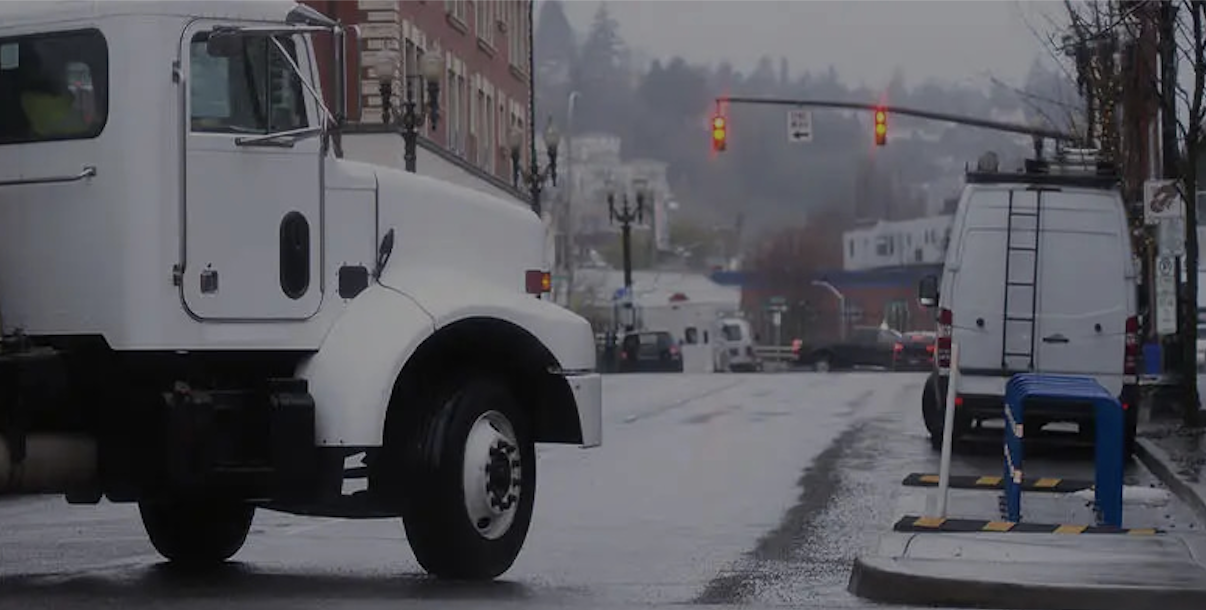Short Haul Trucking Guide

What is short-haul trucking?
While long-haul trucking generally involves deliveries hundreds of miles away from their origin, short-haul trucking consists of smaller shipments and shorter distances. In some cases, short-haul drivers pick up products that long-haul trucks have delivered to local distribution centers, taking them the final few miles to their ultimate destinations.
There are two types of short-haul trucking:
1. Regional trucking
Longer journeys up to 150 miles, sometimes spanning more than one day.
2. Local trucking
Shorter journeys under 150 miles, often within a neighborhood or community.
Both regional and local truckers often have predictable routes and schedules, helping them plan their time—and their time off.
Short-haul truckers travel on city streets and rural routes more than freeways. These smaller roads can be more difficult for trucks, but short-haul deliveries generally use smaller trucks that are better suited to the task than tractor-trailers.
Short-haul trucking vs. long-haul
When considering trucking as a career, short-haul trucking is a good option to consider. Short-haul truck driving mainly involves deliveries within a maximum radius of 150 to 250 miles. While a long-haul truck might travel all the way across the country, making a trip that spans multiple days, short-haul trucking is limited to local or regional deliveries that can often be completed within a single day.
This makes short-haul trucking attractive to drivers who want the freedom of the open road, but want to be home with their families at the end of every day. Read on for more details about the differences between short-haul versus long-haul trucking.
Benefits of short-haul trucking
Short-haul trucking offers a number of benefits that might be attractive to someone considering a career as a truck driver.
Work-life balance
The main advantage of driving shorter routes is better work-life balance. Short-haul trucking jobs can often be completed within one day, making it possible for drivers to go home to their families every night instead of spending days or weeks out on the road.
Lower expenses
For short-haul trucking, you don’t need an expensive tractor-trailer. Many short-haul jobs can be completed with a box truck or a straight truck, which can be purchased inexpensively on the used market. Repair and fleet maintenance costs are cheaper, too: by developing a relationship with a local repair shop, a driver can keep the truck in good condition and save money, unlike a long-haul truck driver who is at the mercy of a dealership in an unfamiliar area when something goes wrong.
Easier driving
Short-haul drivers quickly learn the geography of the local area in which they operate, helping them complete routes more efficiently and with less stress. Knowing the local area can help a short-haul truck driver avoid difficult roads and tight turns, making it easier to drive safely with fewer mishaps.
Less regulation
The regulations that govern short-haul drivers are also less stringent. Unlike long-haul drivers and short-haul truckers that can take advantage of certain exemptions when logging their hours of service (HOS).
Drawbacks of short-haul trucking
There are some potential caveats to be aware of when considering a short-haul trucking career.
Loading and unloading
A short-haul driver is responsible for loading and unloading the truck. In some cases, short-haul drivers make multiple deliveries per day. The time spent loading and unloading at each stop can add up to a significant portion of their workload, and is often unpaid work.
Tight maneuvering
Short-haul trips often involve driving on smaller streets, taking tight corners, or backing into destinations without convenient loading docks. This requires advanced driving skills and can put drivers in risky situations compared with the relative safety of long-haul freeway trips.
Inconsistent or seasonal schedules
Short-haul driving can be unpredictable, sometimes leading to periods of intense work interspersed with dry spells. Some short-haul jobs are seasonal, forcing drivers to keep hustling for other assignments.
How to become a short-haul trucker
Short-haul trucking companies always need drivers—in fact, there is a truck driver shortage right now.
The first step to becoming a short-haul driver is to find a truck driving school. You’ll need a commercial driver’s license (CDL) and you must become familiar with the ins and outs of truck driving, including regulations, fleet safety practices, and driving skills.
A truck driving school can help you navigate these complex issues, making it easier to get started in this valuable and rewarding career. Some schools can even help you find a job with a short-haul trucking fleet after you graduate.
Lytx can help both long and short-haul trucking companies streamline their fleet management practices. Book a demo of our fleet management or fleet tracking software today.
Short-haul trucking plays an important role in the supply chain, helping distribute goods locally and regionally after they’ve been transported over greater distances by long-haul drivers. Lytx can help drivers and fleet managers alike improve safety, maintain compliance, and operate more efficiently.
Learn more about how Lytx can help, contact us.

